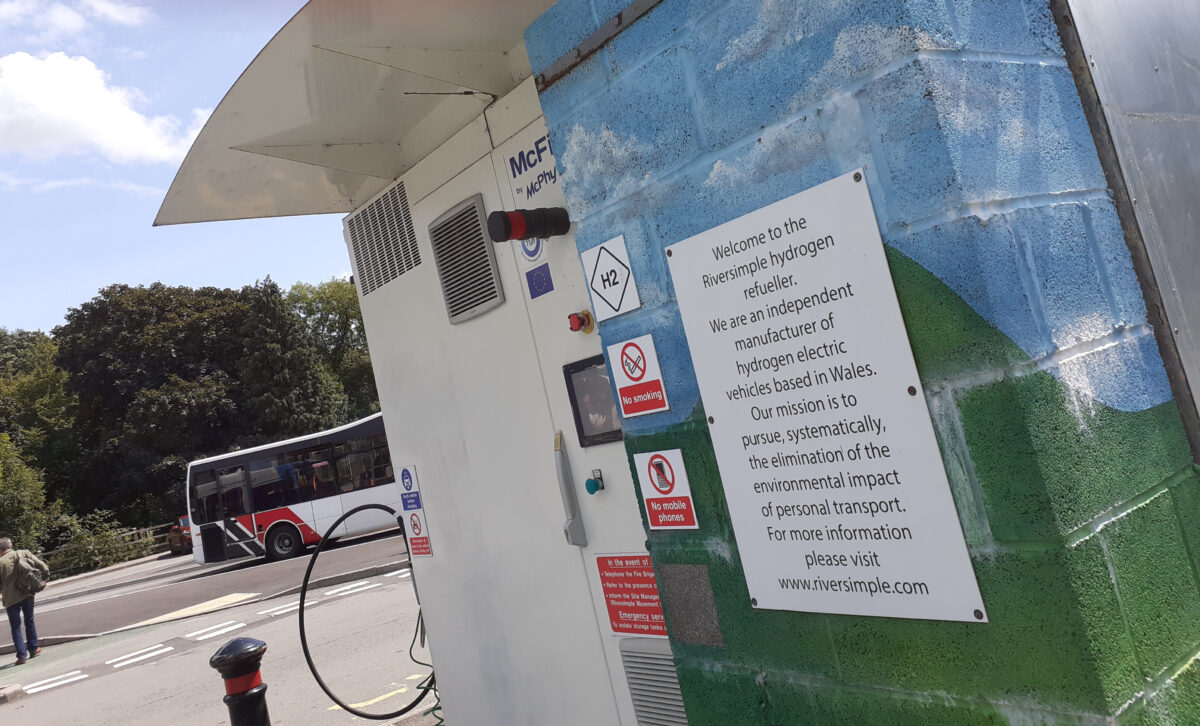Casting doubt on green hydrogen’s utility is a popular sport. High capital costs and the vast spaces needed for associated renewables are cited as the main reasons preventing this clean energy source being commercially viable.
 Hydrogen’s potential as a clean energy source has been widely discussed in recent years, driven by events such as the war in Ukraine. Hydrogen’s popularity stems from its ability to store and release energy without greenhouse gas emissions when extracted from water using renewable energy – or with carbon sequestration when the gas is produced using fossil fuels.
Hydrogen’s potential as a clean energy source has been widely discussed in recent years, driven by events such as the war in Ukraine. Hydrogen’s popularity stems from its ability to store and release energy without greenhouse gas emissions when extracted from water using renewable energy – or with carbon sequestration when the gas is produced using fossil fuels.
This has made hydrogen a critical component of energy planning as a “low to no”-CO2 fuel source for hard-to-electrify segments of the transportation and heavy industry sectors.
The $2/kg mark is generally thought the sweet spot for hydrogen to become a commercially viable alternative fuel. Estimates suggest hydrogen could be produced at $2 at the factory gate by 2030 in countries with good renewables.
In Australia, we can quite easily reach the magical $2 mark – or less – by 2030, with growing demand in domestic and export markets. The federal government’s Hydrogen Headstart program, announced in May’s budget, showcases Australia’s commitment to the industry’s development. The strategy makes it clear Australia won’t be missing out on the benefits of hydrogen as it will stay on track with developments across other markets including the US, Canada, and Germany. Many Australian industrial organizations estimate the current cost of delivered hydrogen as well above $7/kg, however. Where is the cost differential coming from?
The key to successful hydrogen adoption is a systems approach to project development. Rather than viewing each component of the hydrogen production and delivery system in isolation, it is vital to consider the entire supply chain and to design the system as a whole. This holistic approach will minimize cost, while optimizing performance.
Three levers will dramatically reduce the cost of large-scale systems.
Optimize capital costs
Large-scale clean hydrogen production is still in its infancy, with many new projects announced but limited actual development. As a result, customers with large orders can have significant input into the design of hydrogen systems.
For example, customers seeking to build multi-gigawatt projects can engage directly with original equipment manufacturers (OEMs) to secure tailored technical specifications and get accurate prices.
These prices should consider future delivery timelines as the cost of renewables and electrolyzers are likely to significantly decrease in the coming years.
Balance-of-plant costs are often neglected but can take up a significant portion of the expense of renewables and electrolyzers. A deep dive into this component can reveal plenty of opportunity for cost reduction.
Match offtake needs
Companies should start with clarity about their hydrogen requirements and design systems accordingly. For example, an export project will need hydrogen (or a hydrogen carrier) ready to load on a ship upon arrival whereas an iron smelter needs a constant, reliable, daily supply. The various elements of the hydrogen delivery system should be put together with offtake requirement in mind.
Popular content
As seen on many occasions in South Australia, having electrolyzer capacity on site can be useful when costs from the grid go negative, meaning businesses have the opportunity to turn their hydrogen production to generate a profit. This may make hydrogen production a smart addition to the overall system but a set-up wholly reliant on the grid is unlikely to cost-effectively meet the requirements for continuous, reliable hydrogen supply.
Whole-system approach
To ensure a constant, reliable supply of hydrogen, project proponents must focus on the entire supply chain to safeguard success. When designing large systems, it is tempting to break them up into different components and have people in the team (consultants, engineering firms, or OEMs) design them separately then put them back together. Instead of reducing costs, this approach will lead to higher expense.
Let’s say you need 1 GW of renewables input. The temptation is to design a renewables farm that delivers 1 GW of energy at all times but this is not necessary and is likely to result in high cost. The sun does not shine all the time so an engineer designing the renewable energy supply is likely to add storage (batteries or pumped hydro) or firming through the grid, adding substantially to the cost of electricity, and thus the cost of hydrogen.
Whole-system consideration of energy supply tells us running an electrolyzer at a lower capacity factor – with reduced energy costs – can optimize the price of hydrogen. There are multiple and frequent opportunities in the supply chain to firm output at a lower cost. It is important to understand how elements interact rather than focusing on maximizing utilization of any single component.
Sustainability
These three strategies could deliver hydrogen for less than $2/kg, based on experience working alongside organizations across the hydrogen supply chain and taking a systems approach to project development. This will be the key to our future energy security, as indicated by a joint Japanese and Australian consortium comprising governments, universities, and energy institutes.
While there are significant balance of trade opportunities for Australia when it comes to green hydrogen, it would be wise for local industry (with government support) to prioritize the domestic market and then use its learnings to move into export. Not only will this assist with our own decarbonization and create more jobs per kilo of hydrogen, it will also decrease the cost of hydrogen before moving into big export projects.
Exporting is inevitable, however. For example, Japan's interest in co-firing ammonia in coal plants creates hydrogen demand. Unlike Australia, where electrification is cheaper than using gas for households, Japan's high electricity prices will keep many households on gas.
As Australian industry reaches scale, and with the support of growing technical knowhow, prices will undoubtedly decline. It will be exciting to see hydrogen follow a similar cost-reduction trajectory as has been witnessed for solar and wind power.
About the author: Danny De Schutter is a partner at Sydney-based industrial cost reduction consultants Partners in Performance.
The views and opinions expressed in this article are the author’s own, and do not necessarily reflect those held by pv magazine.
This content is protected by copyright and may not be reused. If you want to cooperate with us and would like to reuse some of our content, please contact: editors@pv-magazine.com.


1 comment
By submitting this form you agree to pv magazine using your data for the purposes of publishing your comment.
Your personal data will only be disclosed or otherwise transmitted to third parties for the purposes of spam filtering or if this is necessary for technical maintenance of the website. Any other transfer to third parties will not take place unless this is justified on the basis of applicable data protection regulations or if pv magazine is legally obliged to do so.
You may revoke this consent at any time with effect for the future, in which case your personal data will be deleted immediately. Otherwise, your data will be deleted if pv magazine has processed your request or the purpose of data storage is fulfilled.
Further information on data privacy can be found in our Data Protection Policy.